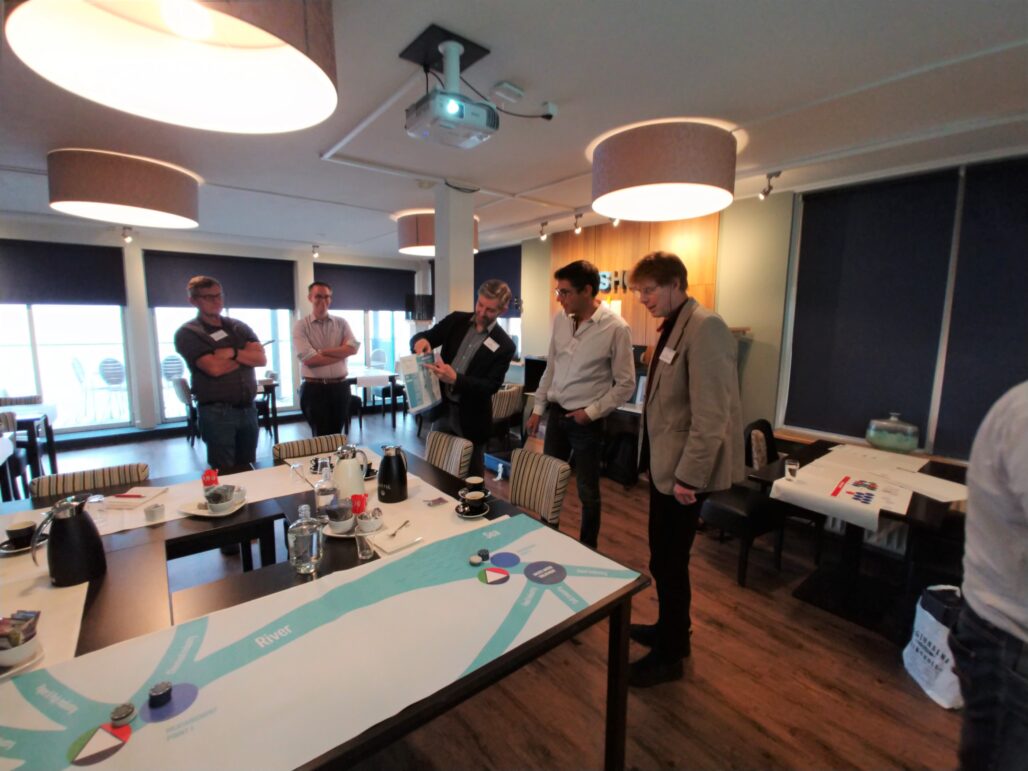Primary source salts can increasingly be replaced by second generation salts that have just as much value, as shown in the ZERO BRINE project. It’s time to take the hurdles to increase circularity of our brine streams, amongst other by matching partners in supply and demand of salts.
Could your company, or a relation of yours, be interested in purchasing second generation salts? The fear of the contamination of salts has led to the practice of only using salts for production processes that come directly from mined sources. Is this high-quality first-generation sourcing really necessary in all industrial processes? Can recovered salts be reused?

Supply risks for process water are increasing and therefore there is need to reuse process water. If water gets reused, the brine gets more concentrated and concentrated brine streams normally need sufficient water for their disposal. If salts can be removed from the brines for other applications, brine becomes less concentrated. This would also bring a positive effect on surface water quality.
Salts in brine from process industry can be regenerated now with high levels of purity. In the ZERO BRINE project, much emphasis is on using innovative technologies to recover magnesium, sodium and calcium. This can also stimulate solutions for minerals that are experiencing increasing scarcity, such as lithium.
In addition, the highest quality of salts may not be needed across all sectors – there are industries that only require a sufficient amount of purity to achieve good market value. Process industries aim at circularity of water and minerals by finding innovative solutions for water and brine recovery.
Parties providing salts and parties interested in using these salts will need to be able to find each other. One of the conditions is that parties become more open about their brine production and salt needs: to become more circular, fuller disclosure of information with relevant parties is needed. The ZERO BRINE project in work package 6 (ISPT is leader, partners involved in this work package are NTUA, TUDelft, Sealeau and Revolve Media) stimulates this in two ways: stimulates this in two ways:
- Workshops for bringing together salt providers and companies interested in regenerating salts. Details of the workshop programs will soon. Please let us know when this is of interest to you and your company! Contact: maiken.larsen@ISPT.eu
- You are invited to register on the Online Brine Platform developed for this specific purpose: https://zerobrine.eu/online-brine-platform/

Register now for the Online Brine Platform!
Would you like your company to be part of a network of interested stakeholders that, via an online forum, can contact prospective business partners? The Online Brine Platform (OBP) is set up to facilitate the transition towards a circular economy within process industries. It’s a dedicated web portal that offers information specific to the field of saline wastewater management and reuse of secondary raw materials.
Registered users have access to information on the available quantities and qualities of saline wastewater, recovered materials and resources needed by the end users, as well as the location and proximity to industrial sites. This should enable industries to make informed decisions regarding the management of their own resources.
The OBP reduces the transaction costs (for search and information costs) by proposing possible matches to registered users. The matching is based on the required and available materials as well as on the available quantities, on the proximity and on the required qualities. Browsing the portal is free for all visitors and full access to all data is reserved for registered users.
The success of the platform is dependent on participation. If your company wants to increase circularity of the use of salts in industry, please register on:
The ZERO BRINE project has received funding from the European Union’s Horizon 2020 research and innovation programme under grant agreement No 730390.
Acknowledgement
This project has received funding from the European Union’s Horizon 2020 Research and Innovation Programme under grant agreement No 730390.